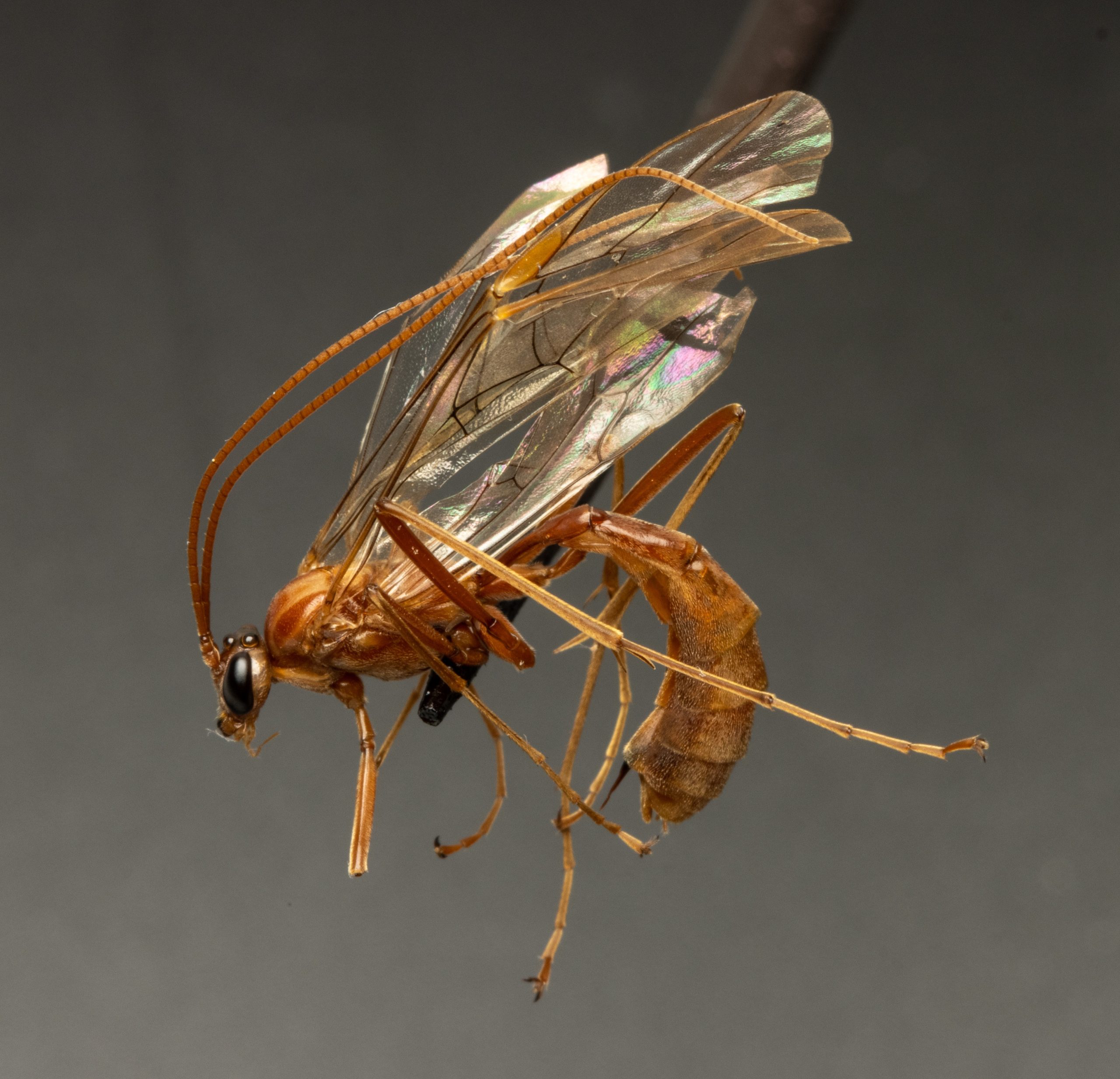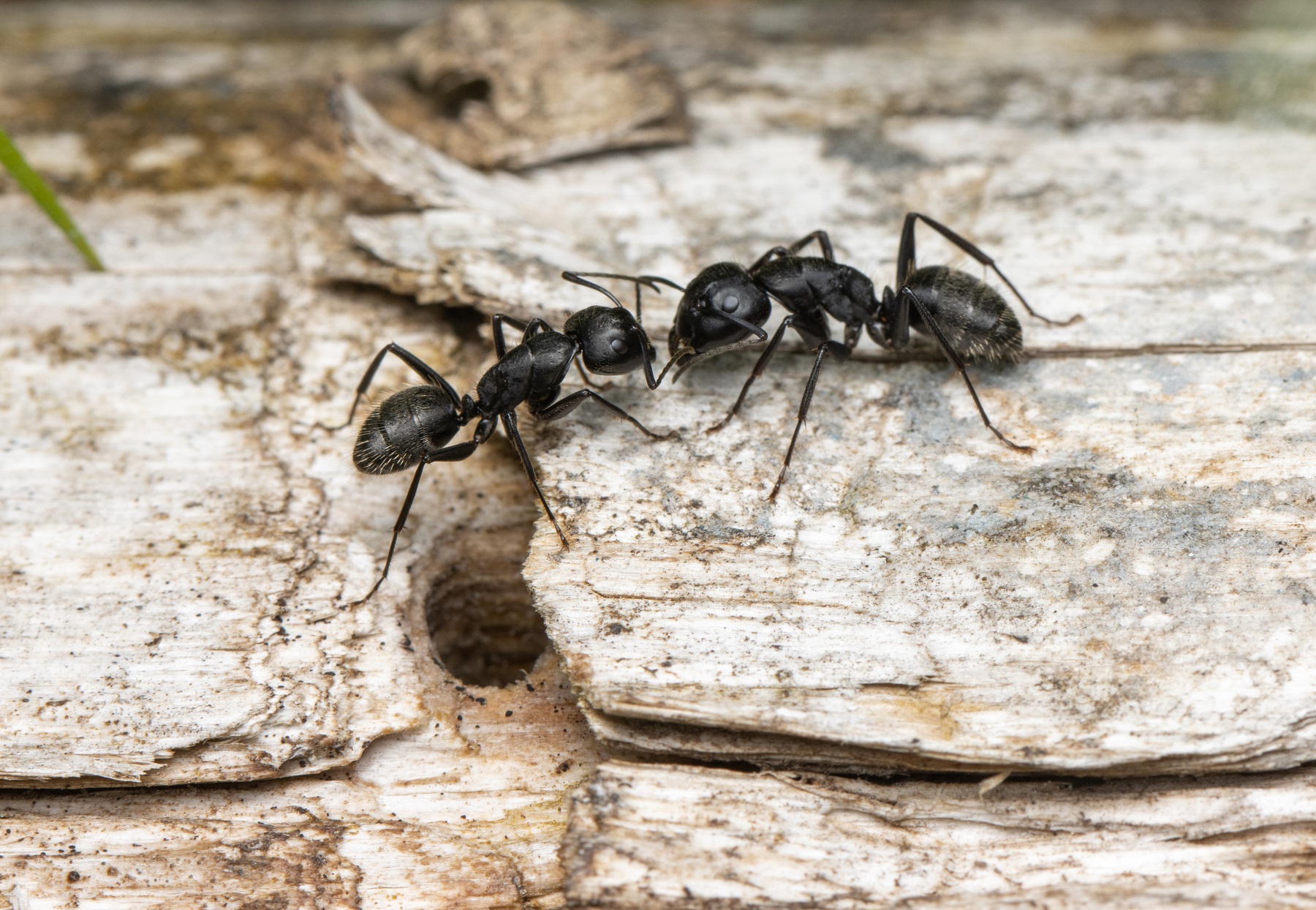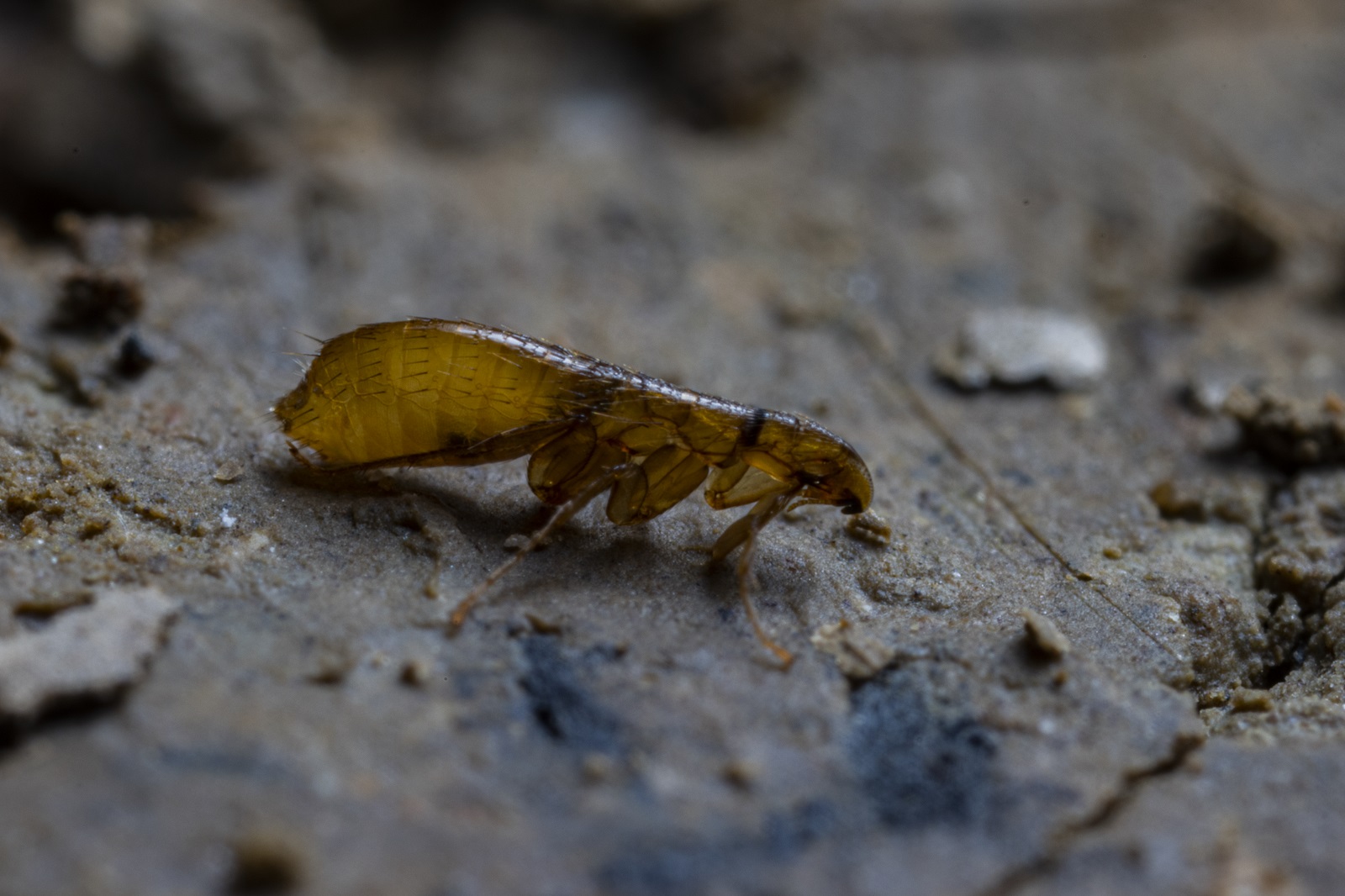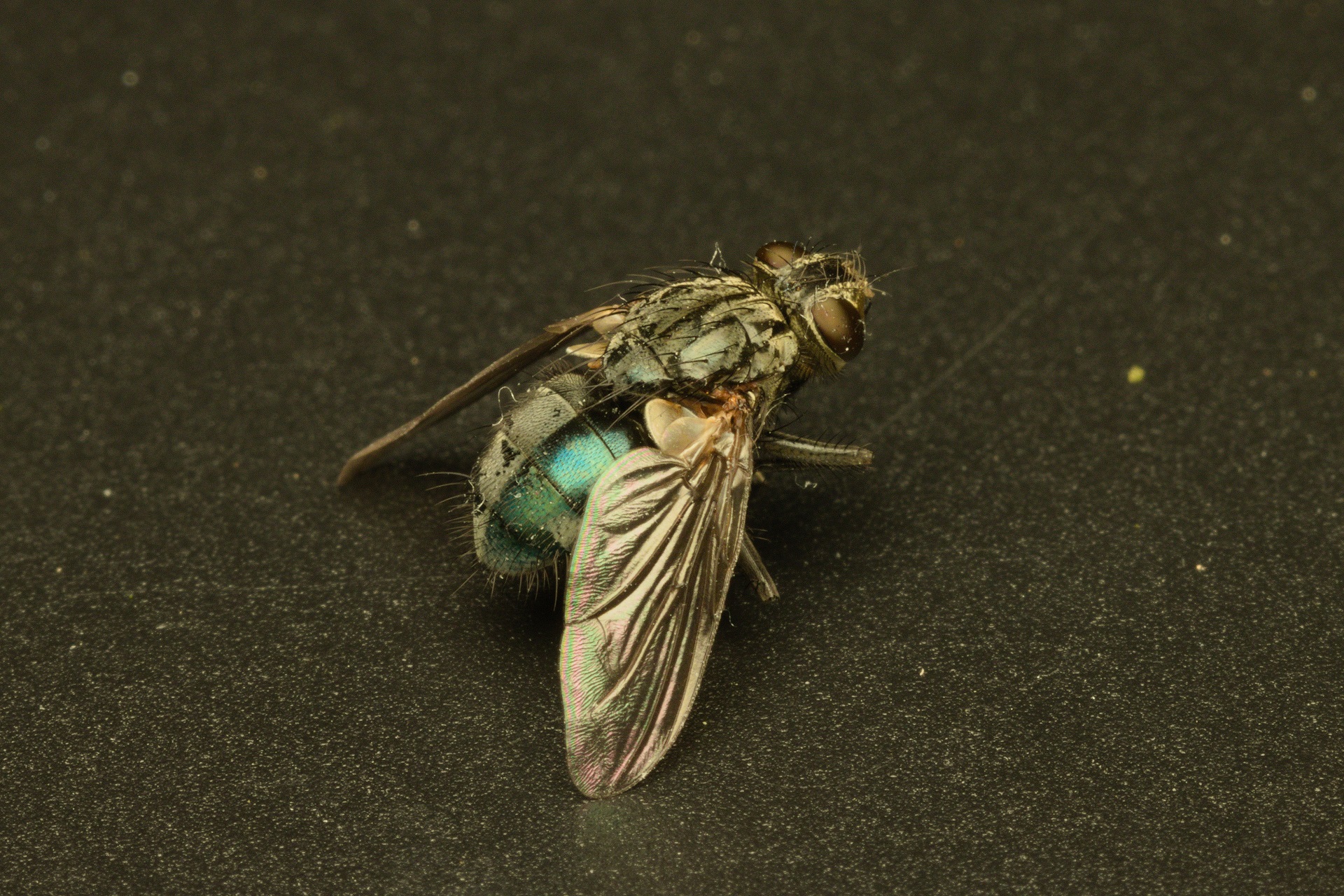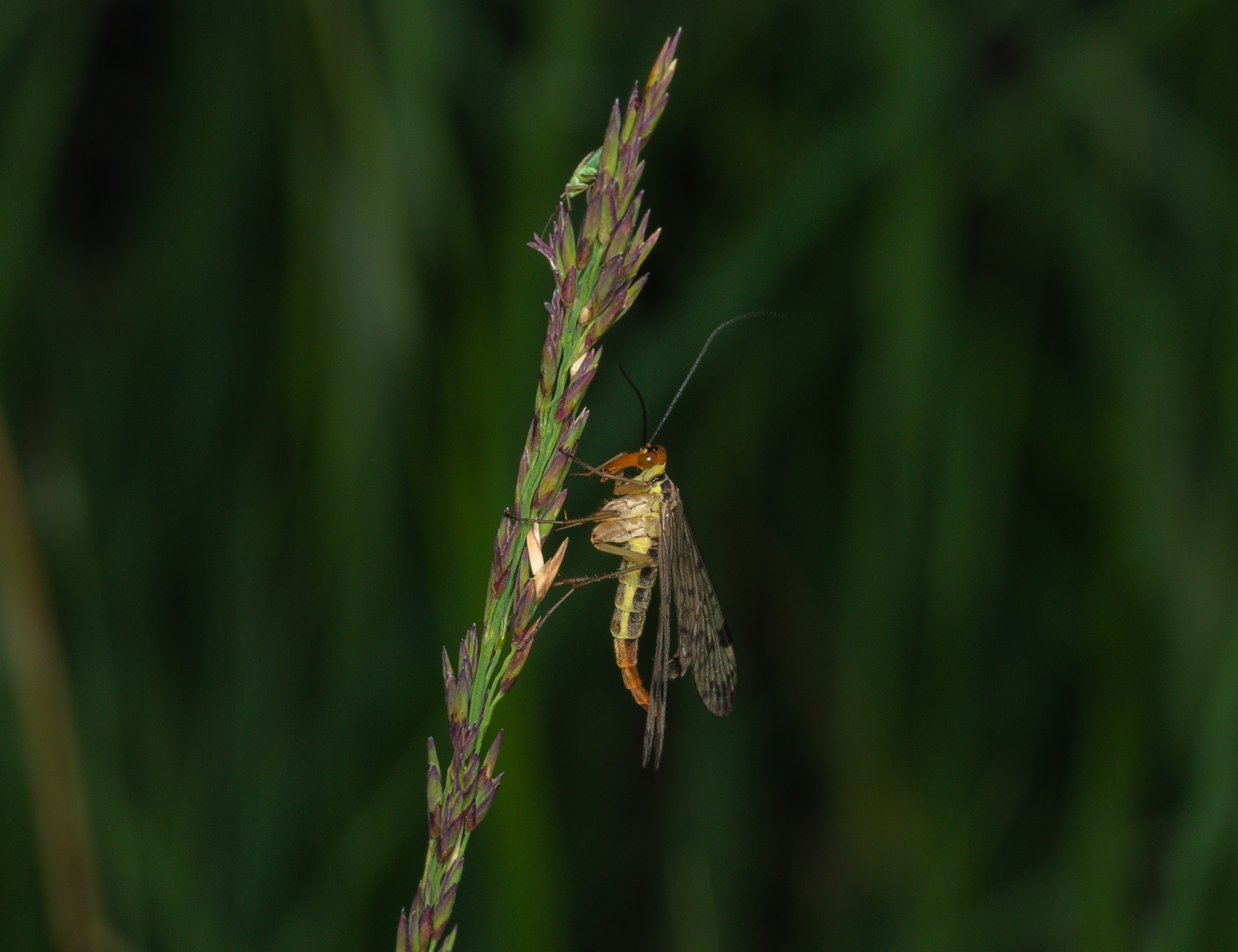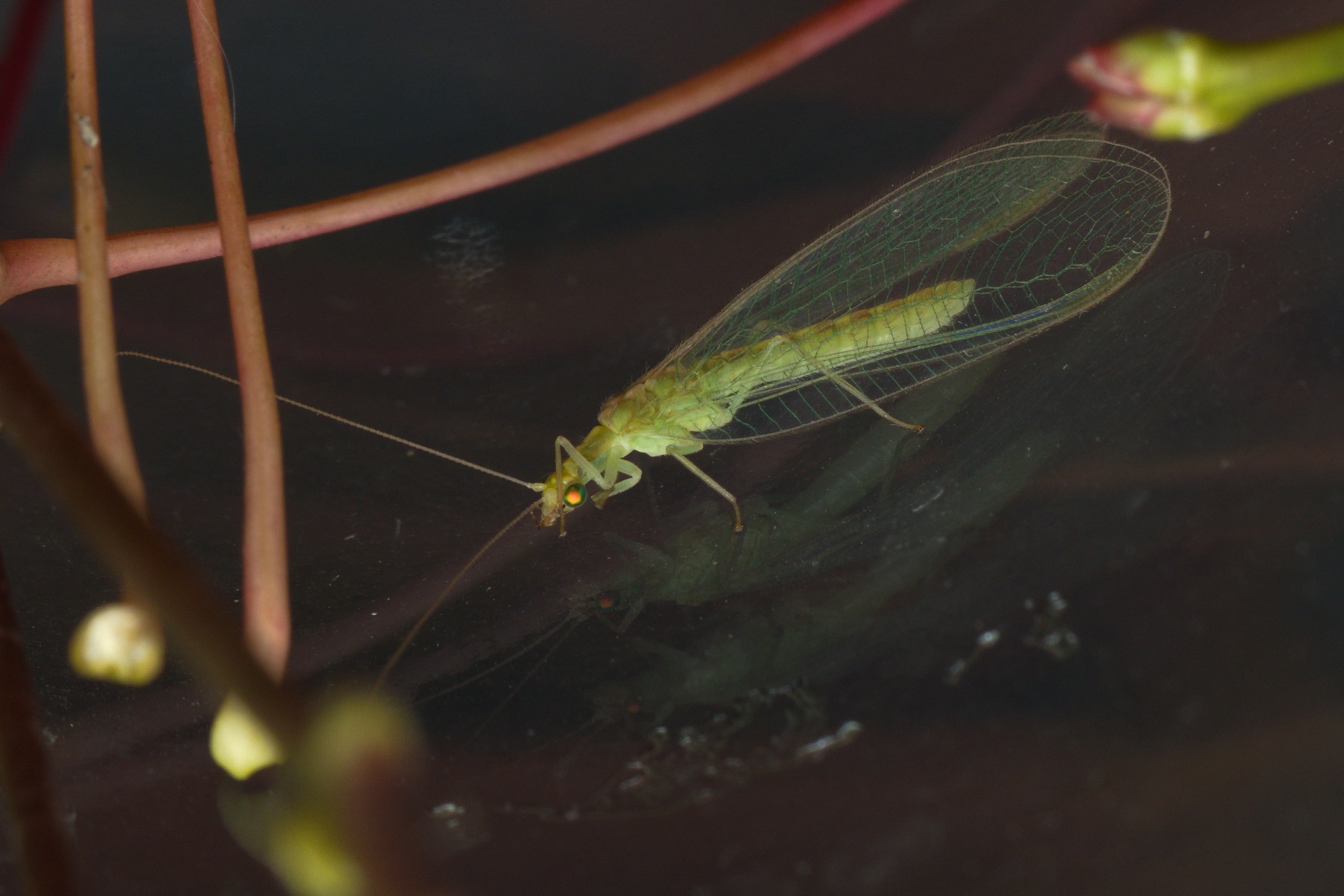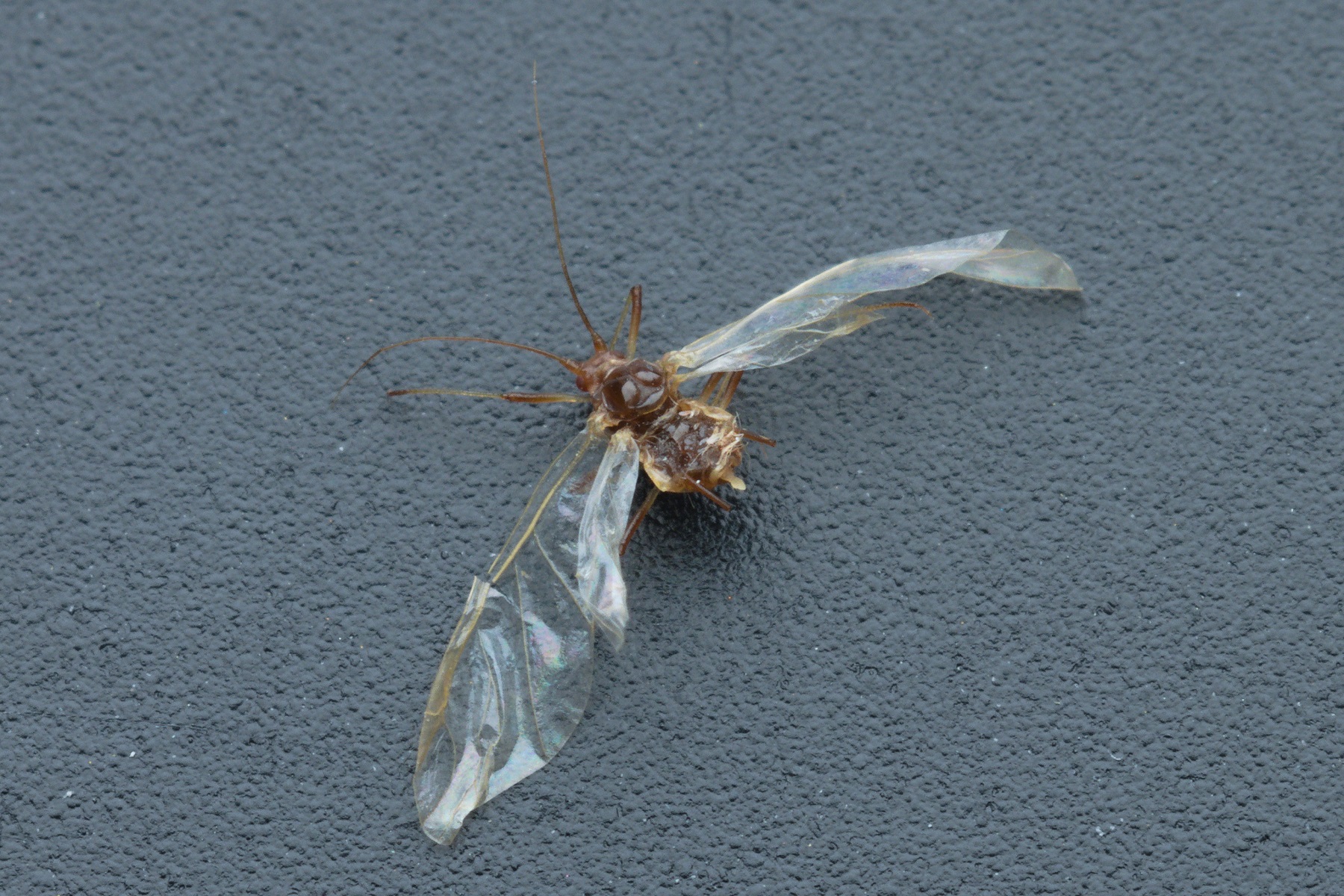Membracidae
Description
Treehoppers are about one centimetre in size, of different colours and appearances. They undergo incomplete metamorphosis (hemimetabolous development), the larvae resemble adults and are called nymphs. The body is made up of a head, thorax and abdomen.
The head consists of an acron and six segments. It bears a pair of sessile compound eyes and a pair of smaller pigment-cup ocelli. A pair of short filamentous antennae grow in front of the eyes. The head is hypognathous, the mouthparts are directed backwards. The upper lip (labrum), mandibles, first maxillae and the lower lip (labium; fused second maxillae) are modified into a beak that acts as a dagger and a sucker.
The thorax consists of three segments, namely the prothorax, mesothorax, and metathorax. The tergite of the first thoracic segment (pronotum) comes in bizarre and attractive shapes, most commonly resembling thorny projections. On the dorsal side of the meso- and metathorax are two pairs of membranous, sparsely veined wings, which are folded roof-like. The first pair is light brown and larger: it protects the completely transparent and delicate second pair. On the ventral side, a pair of short legs grow from each thoracic segment. They walk, jump, groom and communicate with them.
The abdomen consists of eleven segments and a telson. It is barrel-shaped and without appendages. Females have a short and straight ovipositor at the end of the abdomen, which they use to lay eggs into plants.
Biology
Treehoppers have the highest species diversity in the tropics; in Europe however, only four native and one non-native species are found. In Slovenia one can find the horned treehopper (Centrotus cornutus), the broom treehopper (Gargara genistae), and the buffalo treehopper (Stictocephala bisonia). The former is recognisable by one long, wavy, backward oriented thorny projection and two shorter, laterally oriented ones. It is found between May and August, adults most often live on woody species (Rubus, Quercus, Prunus), while nymphs on bracken (Pteridium aquilinum). The broom treehopper is noticeably smaller, about half a centimetre in size, and has only one long, straight, backward-pointing projection. It is most often found between June and October on woody legume plants (Fabaceae), especially on Scotch broom (Cytisus scoparius) and petty whin (Genista anglica). The buffalo treehopper is light green, the three spines on the large pronotum are short and have a dark tip. It is native to North America but has now spread to most of Europe. It is most often seen between July and November. Nymphs are found on herbaceous legume plants, especially on clover (Trifolium) and alfalfa (Madicago sativa), while adults are often found on fruit trees and grapevines, where they can cause damage by laying eggs and feeding.
Treehopper nymphs and adults feed on sap. They pierce the wall of the plant organ with their beak, a two-channel mouthparts specialized for piercing and sucking. They suck sugar-rich phloem sap into their stomach through the front food channel and inject their own saliva with digestive enzymes into the plant through the back salivary channel. Like some other true bugs (e.g., aphids), many treehoppers excrete excess phloem sap through their anus. The nutritious, sweet droplets are called honeydew. They are especially enjoyed by some hymenopterans (e.g., ants, bees, and wasps), which in turn protect the treehoppers and their nymphs from predators.
Treehoppers are attractive mainly because of the unusual shapes of their pronotum. Tropical species have the most extravagant decorations and can also be brightly coloured. The pronotum most often has various outgrowths, which is why the animals resemble plant thorns, twigs, leaves or stems. It is very likely that this is an effective defence strategy against predators and parasites, either because of camouflage or because they are harder to catch. It is less likely that the beautiful pronota are the result of sexual selection, as females are larger and have larger pronota than males.
The main way treehoppers communicate is through mechanical stimuli. Unlike many other animals, they do not produce sound, but low-frequency vibrations on a substrate when they knock or drum against it with rhythmic body movements. They “listen” to the vibrations with special organs in the tibiae of their legs. The vibrational songs are species-specific and serve to mark territory, attract a mate, and communicate within a group of conspecifics.

Sorodni členonožci

Authors
- Urban Bogataj,
- Gregor Bračko,
- Teo Delič,
- Cene Fišer,
- Žiga Fišer,
- Rok Kostanjšek,
- Rudi Verovnik,
- Miloš Vittori,
- Valerija Zakšek.
Students Vito Ham, Vesna Jurjevič, Gaj Kušar, and Adrijan Samuel Stell Pičman also participated in the project.
